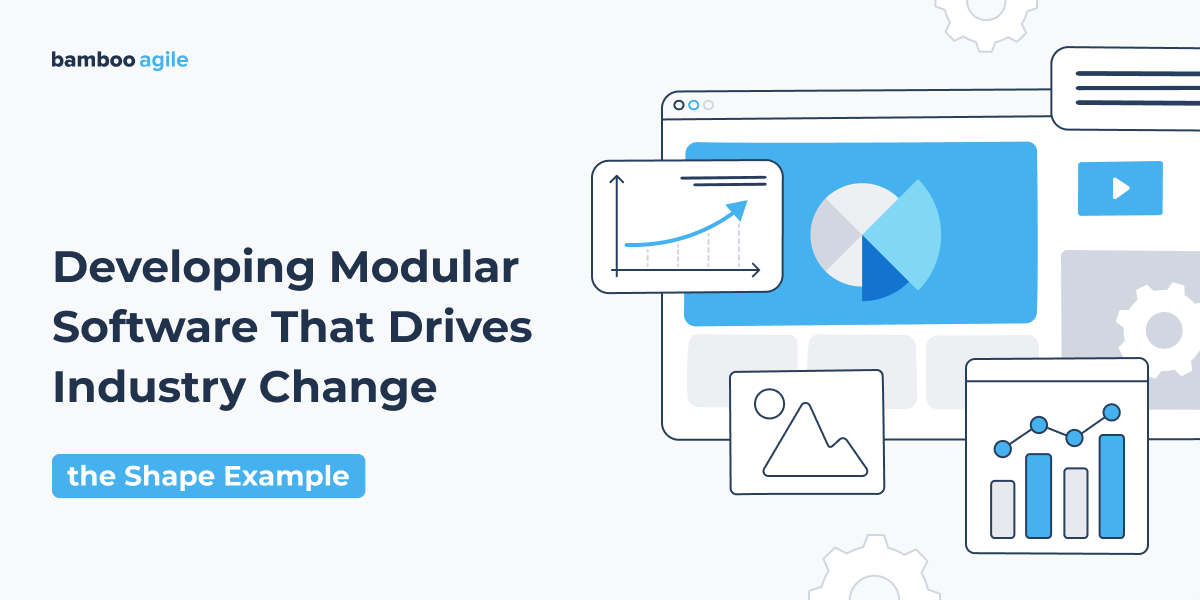Why Customization is Key to Industry Transformation Today
A distinctive feature of the modern market is fast consumerism, when everything has to be quicker, cheaper, and ready today. Trends change in a flash, production moves at lightning speed, and the market is flooded with endless, almost identical solutions. It’s harder than ever to stand out or keep up with what’s new.
That’s why customization is so important. It allows you to dynamically adapt to the user’s needs, adjusting your functionality to changing specific requirements. Numerous of off-the-shelf solutions’ functionality is determined by the limited features that come standard to that software.
Since off-the-shelf software’s functionality often struggles to keep pace with a growing business, companies have to invest in building software from scratch.
There’s a common misconception that custom software development is always costly and requires plenty of time. However, it’s neither as expensive nor as time-consuming as many think. Today, there are numerous options of no-code platforms and modular solutions that make it easier to tailor software to meet specific business needs efficiently and affordably. Such benefits are reflected in recent research by Forrester, where businesses valued low-code platforms for their flexibility (83%), speed (63%), and ability to automate processes (67%).
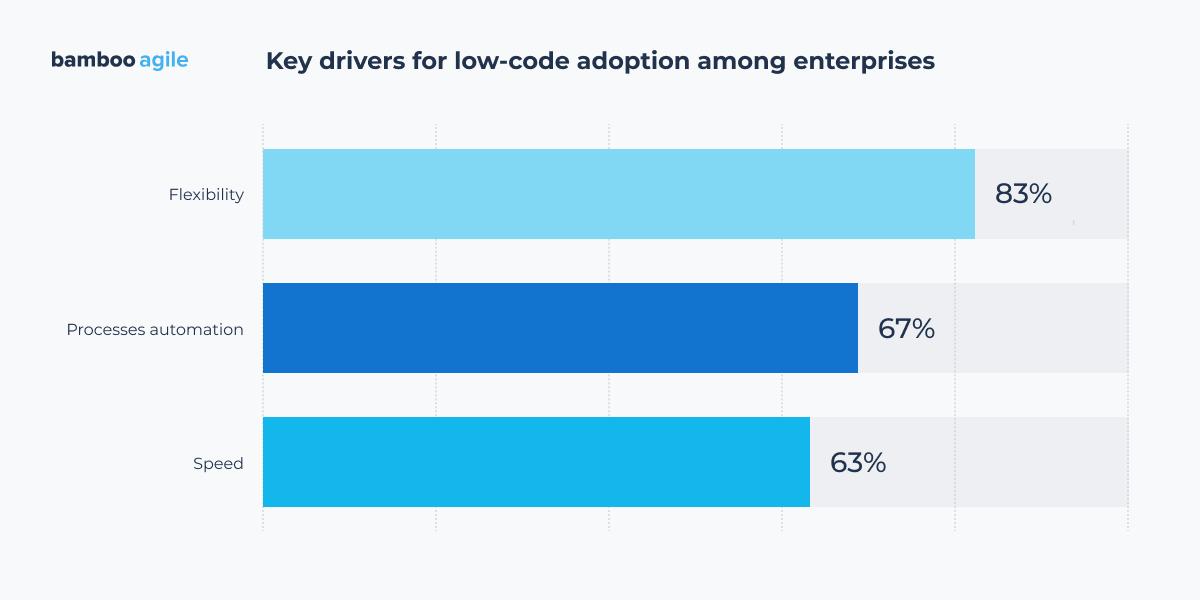
Besides, a 2024 anonymous survey revealed that 84% of U.S. organizations reported having extreme or somewhat reliance on low-code/no-code SaaS solutions.
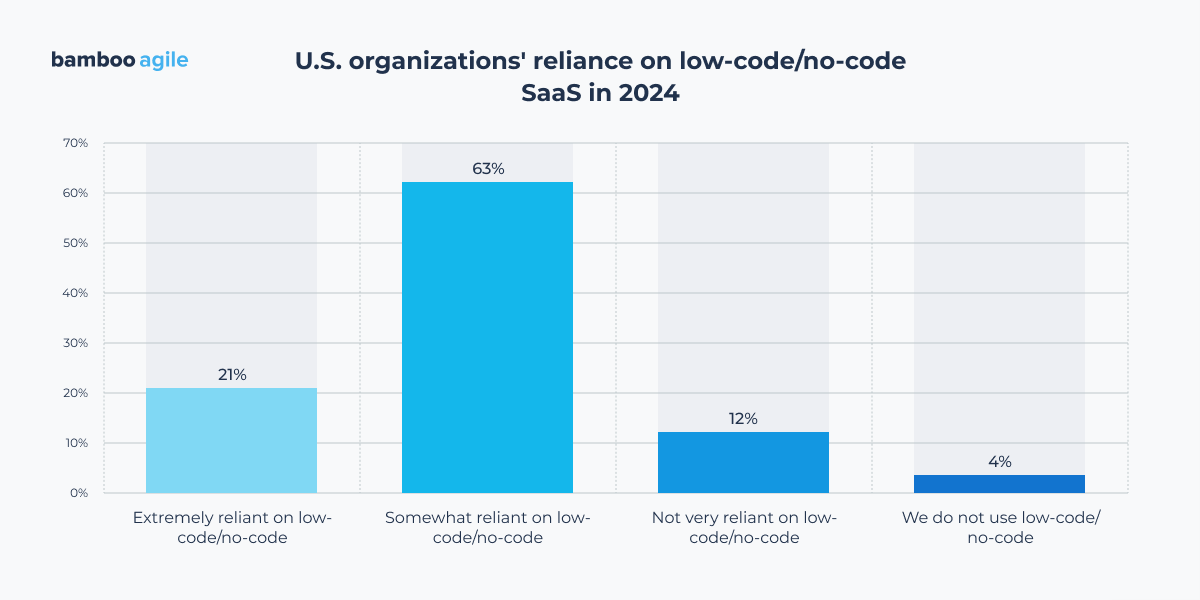
Digital transformation is rapidly spreading its influence to all aspects of business, even non-core functions within organizations strive for automated processes. Still, finding developers, not to mention the necessary time and budget, can be challenging to achieve this goal. Therefore, an increasing number of businesses are looking for no-code modular software design that make application development more accessible.
Modular Software
But what exactly is modular software? Вasically, the modular software design approach breaks complex systems into smaller, independent pieces – modules – each handling a specific task.
Unlike monolithic solutions, a modular application is more flexible and easier to customize. Need to introduce a new feature? Add a module. Looking to upgrade functionality? Replace only the relevant piece.
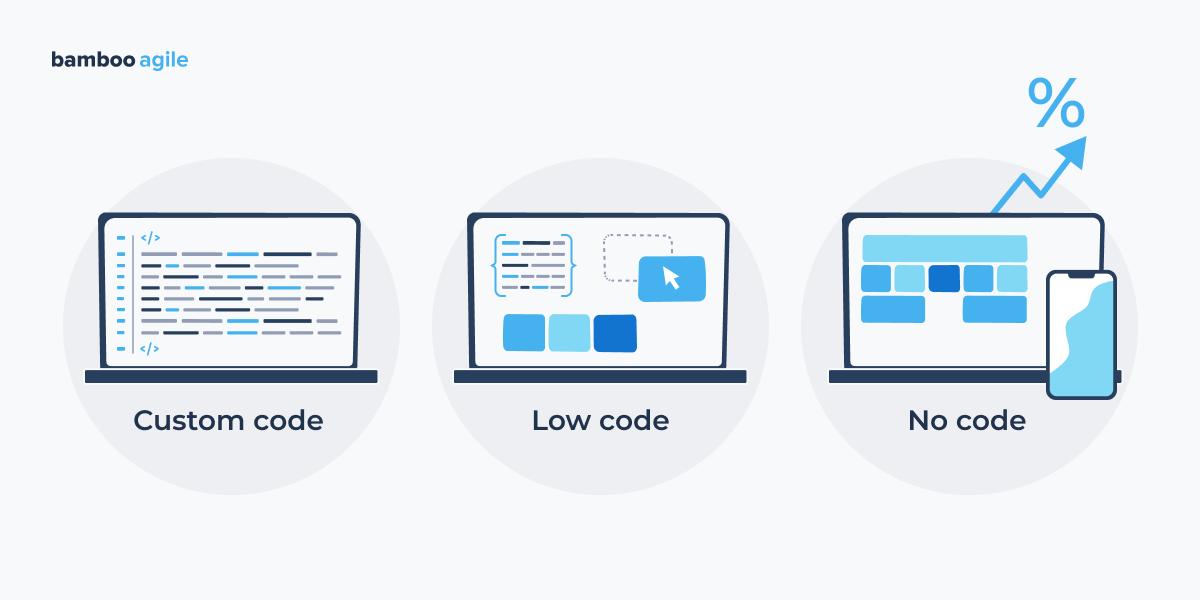
Let’s study the concept behind this approach.
The Concept: What Makes Software Modular?
To understand the concept of modular software, let’s take a closer look at its core unit – the module itself. A module is a self-contained unit that performs a specific function within the larger system. Each includes its own code, data, and logic, making it a standalone entity within the software. Changes to one module do not impact others.
There are some key features of a software module that allow teams to work independently, make the module reusable in many systems, and interchangeable across different contexts.
In particular, a module is:
- Independent. It means that a module is developed in such a way that it has minimal to no impact on other modules. It is an important factor to increase productivity as engineering teams can work independently of each other when creating, maintaining, and testing the code.
- Reusable. A module can be reused in different systems without any modification which is rather beneficial if you want to shorten the time-to-market.
- Interchangeable. Interchangeability means you can replace a module without impacting the rest of the system. This flexibility is particularly valuable when upgrading a system to introduce new features or fix bugs. If you can limit changes to one or a few modules, less time is needed to test and implement changes.
By keeping modules as independent as possible, engineers ensure software remains more flexible, easier to maintain, and less prone to unexpected issues during updates.
The Advantages of Software Modularity for Industry Disruptors
Modular software is becoming a key tool for different industries, as it allows for the rapid implementation of new features, adapting to the specific needs of the market. It might be particularly useful for startups across various domains. Modularity allows rapid prototyping, fast MVP launches, and easy workflow automation.
While no approach is considered the absolute best, modular software design offers significant benefits that make it a fairly good choice for many projects.
Faster Market Validation
Since each module is almost an independent entity, development teams can work on them concurrently. Therefore, they can be released and tested on the audience incrementally before a wider rollout. It allows you to adjust tested features based on user feedback, ensuring your modular application meets customer needs and expectations before reaching the broader market.
Easier Iteration and Product Updates
Сhanges in modular application can be made without affecting the entire system. Thanks to components decoupling, even non-technical stuff can easily modify, replace, or add new modules without disrupting the entire system.
Fostering Digital Transformation Without Coding Expertise
Modular software allows companies to implement new technologies without requiring employees to have specialized programming knowledge. This is achieved through technological neutrality, standard interfaces (APIs) for integration with other solutions, and advanced interfaces like drag-and-drop functionality. This also simplifies the work of employees without a technical background allowing them to customize features and frontend elements as needed. As a result, companies can quickly adapt technologies to their needs.
Customizability for Different Clients
It is easy to customize the modular application for different types of customers, whether they are large corporations, small and medium-sized enterprises, or individual users. Each customer can select only those functions that they need, and the remaining modules can be disabled or replaced depending on the specifics of the business. Thus, there will always be a suitable modular app design option for various industries, regions or scales of activity.
Case Study: Our Work on Shape’s Modular Design for the Payment Sector
The Vision Behind Shape
Bamboo Agile developed Shape, a web-based payments platform built as a modular application. Designed as a Payments-Platform-as-a-Service (PPaaS), Shape empowers all types of payments businesses to create bespoke white-label solutions without writing a single line of code.
Based on a modular app design approach, Shape launches with six core modules: Onboarding, Verify, Data, Billing, Payments, and Analytics – each representing a key business process of payment service providers (PSPs). The platform covers the complete merchant and transaction lifecycles, from onboarding to fund settlement. It solves PSPs’ common challenge of manual backend processes by automating merchant onboarding, global compliance verification, fund orchestration, reporting, and billing.
In short, Shape’s mission is to get payments businesses to market quicker. It offers payment service providers as a “plug-and-play” alternative to building systems from scratch, saving businesses millions in capital investment and years in development time.
Building Customization Into Shape’s Core
The modular software development approach allowed us to customize the solution for different use cases and clients by providing adaptable functionality through a flexible architecture. Licensees could select and combine specific modules to create tailored solutions, whether as a complete end-to-end payment operation or as standalone services for specific needs.
The platform employs a modular architecture that allows users to shape their business with the exact set of features they require. Currently, users have access to two key modules:
- Shape Onboarding. This module streamlines onboarding merchants onto your very own Shape workspace with the help of easy to understand step-by-step instructions. Shape Onboarding allows you to configure your customer database (complete with an API guide), generate custom sign-up forms, and complete the automated onboarding experience with a contract between you and your client.
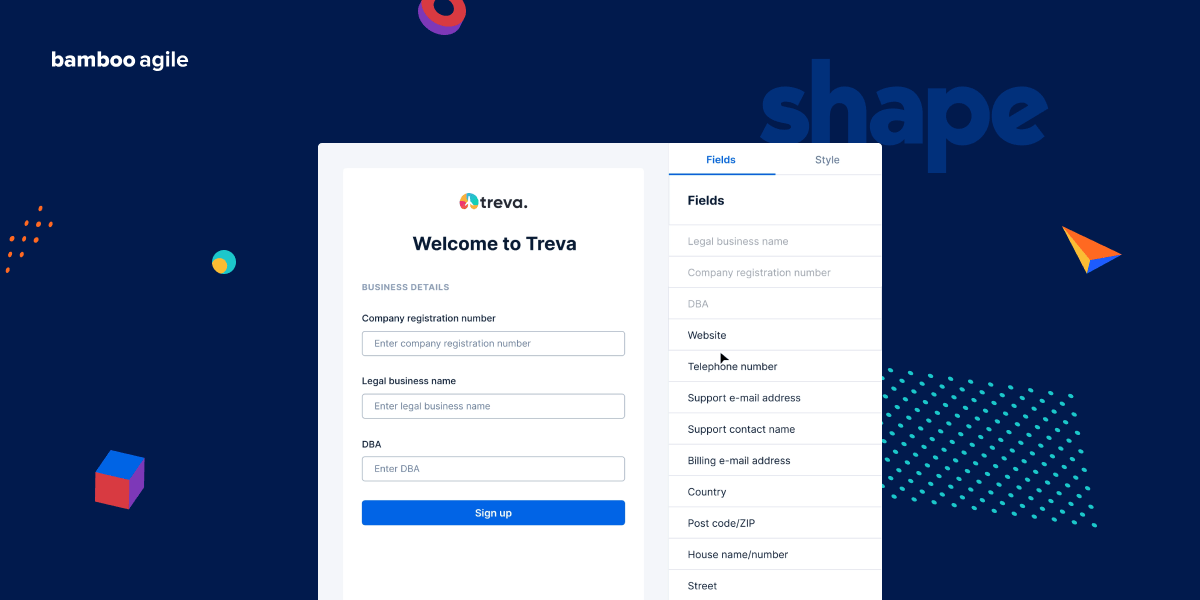
- Shape Verify. Shape can run automated eKYC verification checks with global coverage, minimizing data and documentation requests while shortening your merchants’ time to market. The Verify module also allows you to define your custom acceptance thresholds, as well as to effortlessly filter and route merchant applications.
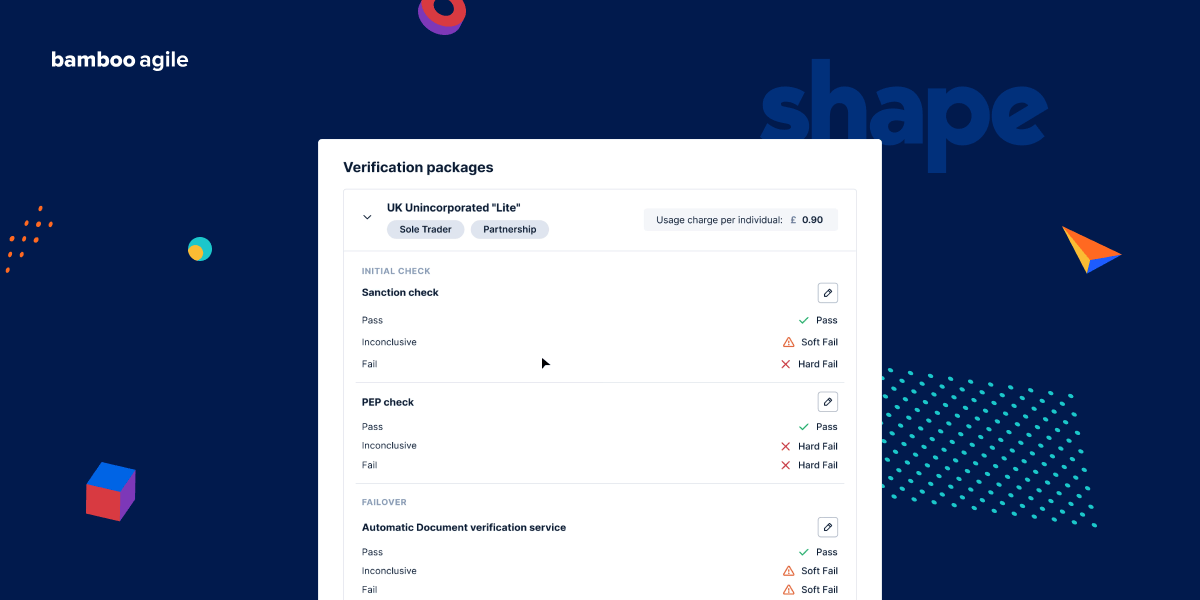
For example, payment facilitators could use the entire modular application suite to manage onboarding, compliance, payment processing, and settlement, while ISOs might focus solely on modules like Onboarding and Verify for merchant acquisition.
Overcoming Challenges in Integration of Modules
From the outset, the primary challenge of modular app development was designing and building a robust infrastructure to serve as a foundation for the system. This required balancing flexibility and productivity in the architecture, a goal we achieved by adhering to a modular design approach.
The development of individual modules also brought its share of complexities. A particularly noteworthy example was integrating a third-party solution for Shape Verify. This required addressing the secure transfer of ID information and ensuring seamless automated eKYC checks. While demanding, overcoming these challenges proved to be an invaluable learning experience, showcasing the intricacies and rewards of effective module integration.
Integrating system modules also presented challenges, as not all integrations behave uniformly. This variability often makes it impossible to establish a universal algorithm throughout the modular software development process. As a result, the team occasionally had to implement different algorithmic paths tailored to specific integrations to ensure optimal functionality.
Potential of Shape’s Modular Approach
The development of Shape as a modular solution positions it well for the future of the payments industry. It can appeal to a wide range of clients, from startups to large-scale enterprises. As payment service providers are looking to reduce costs and time-to-market and at the same time escape sacrificing quality or compliance, Shape’s modularity becomes a key differentiator. Companies no longer have to build everything from scratch, cutting down the capital investment and development time.
Furthermore, Shape’s architecture’s flexibility is what gives it the possibility for long-term success. Businesses can quickly assemble the features they need, having an option to scale or adjust them as their needs grow.
In other words, modularity is both a technical choice and a value proposition of Shape. Its future looks promising, as the flexibility inherent in its modular approach will continue to resonate with the dynamic payments industry.
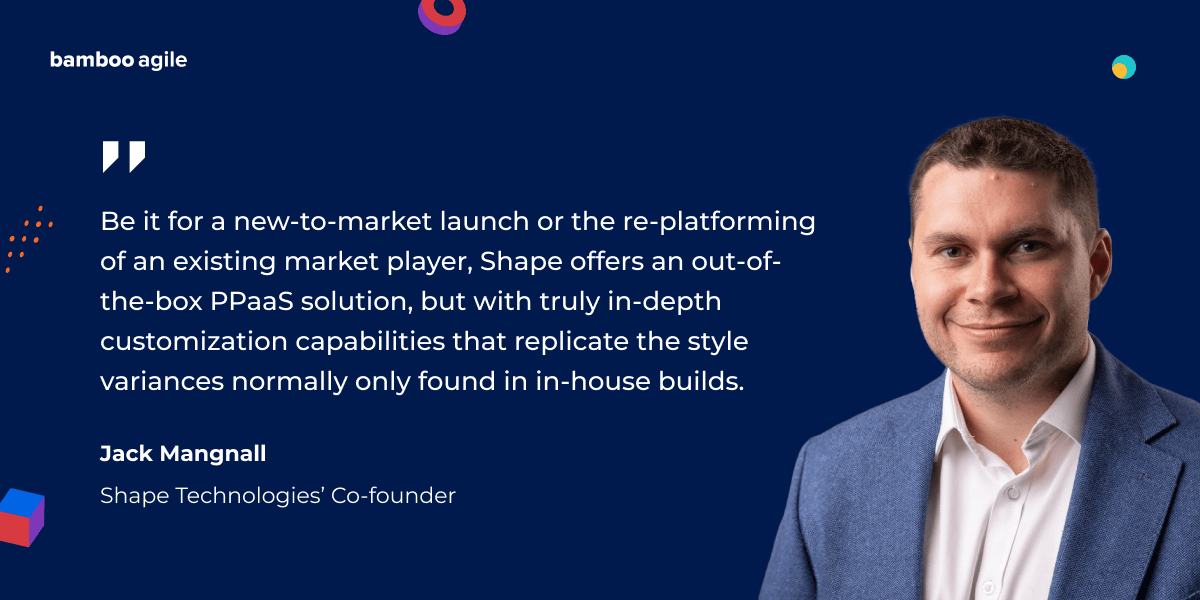
Conclusion
Modularity in software development is not only a technical design choice but a strategic advantage. It allows businesses to adapt swiftly to market demands and deliver highly customized solutions that resonate with diverse customer needs. Complex systems are broken down into independent, manageable components, so that modular applications ensure greater flexibility, easier maintenance, and a faster response to change.
Planning to revolutionize your industry with modular software? Book a consultation with the Bamboo Agile team to discuss scalable architectures, integration strategies, and the development roadmap for your product.
